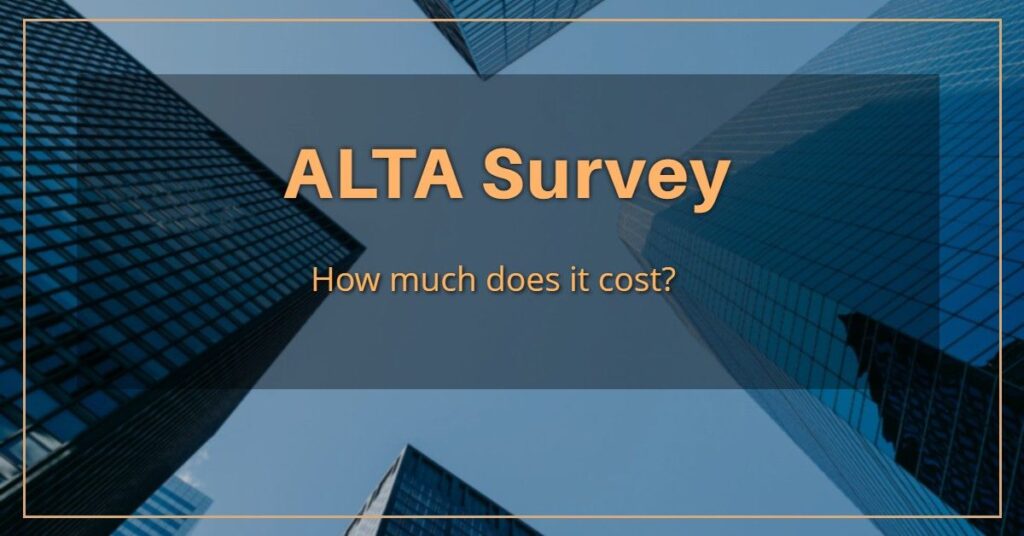HOW IS AN ALTA SURVEY DIFFERENT FROM A BOUNDARY SURVEY?
This article is shared by permission of the author, Connie Barrett.
Some more plain english basics about ALTA surveys for those who may find themselves in a position of having to request one.
While both ALTA surveys and boundary surveys determine property boundaries, there are significant differences between the two in terms of scope, detail, and purpose. Here are key differences:
Scope and detail: ALTA surveys provide a more in-depth and comprehensive analysis of a commercial property compared to boundary surveys. In addition to establishing property boundaries, ALTA surveys include information on easements, rights-of-way, improvements, zoning, utilities, flood zones, topography, monuments, legal descriptions, and title exceptions. Some of these will depend on the optional items, which will be discussed in a different post.
Standards: ALTA surveys adhere to the stringent standards set by the American Land Title Association (ALTA) and the National Society of Professional Surveyors (NSPS). These standards ensure a specific high level of accuracy and consistency in the survey data. Boundary surveys, on the other hand, follow state and local regulations, which can vary by jurisdiction and density of population/parcelization. In some jurisdictions ALTA surveys may also have to have boundary survey information extrapolated and filed with the county of surveyor as a “Record of Survey”.
Property type: ALTA surveys are primarily used for commercial properties, whereas boundary surveys can be conducted for both residential and commercial properties.
Purpose: ALTA surveys are often required by lenders, title companies, and attorneys during commercial real estate transactions to ensure accurate representation of the property and minimize potential disputes or conflicts. Boundary surveys are generally conducted to establish property lines and may not provide the same detail required for commercial transactions. Discuss this with your surveyor, Lender, attorney and title company.
Title issues: ALTA surveys specifically address title issues listed in a title commitment or preliminary title report, such as encroachments, easements, or liens, which may affect property ownership and development. Boundary surveys typically do not delve into title-related matters, unless one asks for a review of title encumbrances. Boundary surveys usually don’t include topography.
Cost and time: ALTA surveys can be more time-consuming and costly than boundary surveys due to their the additional fieldwork, research and analysis of record documentation required.
ALTA Surveys are a vital step in due diligence process. These are highlights and not an exhaustive list of differences. If you have specific concerns or questions, let’s discuss them in comments.
HOW MUCH DOES AN ALTA SURVEY COST?
The cost of an ALTA survey can vary significantly depending on several factors, such as the size, complexity, and location of the property, as well as the specific survey requirements. Since ALTA surveys are comprehensive and adhere to specific standards, they are more expensive than simple boundary surveys.
Some factors that can affect the cost of an ALTA survey include:
Property size: Larger properties generally require more time and effort to survey, resulting in higher costs.
Property complexity: Complex properties with multiple or dense improvements, irregular boundaries, or challenging topography can increase the time and effort needed for the survey, raising the cost.
Location: Properties in remote or hard to reach areas may require additional travel time and on-site labor for the surveyor, increasing the cost.
Availability of existing records: If previous survey records or property documents are available, it can save time and effort for the surveyor, potentially reducing the cost. However, if such records are lacking or outdated, the surveyor may need to conduct more research, increasing the cost. Quality of existing records will be a factor as well.
Optional Table A items: ALTA surveys include optional items listed in Table A of the ALTA/NSPS standards. If you choose to include any of these items, such as topographic data or wetlands delineation, Parking space counts, underground utilities research or field location and similar, it will increase the cost of the survey. More about this in future posts.
Title Matters: Title Report Exceptions and their length. Each title report exception document which can be geographically located on the map needs to be read and analyzed (plotted). Some properties can have a handful of items (typically easements), and others can have several dozen.
Time constraints: If you require an expedited survey, the cost may be higher due to the need for additional resources or overtime work.
Record of Survey: In some states and under certain conditions a Surveyor of Record is legally required to file a map with the county surveyor. This map is called a Record of Survey. It is a separate map from the ALTA survey, and there is additional cost associated with preparing and filing it.
To get an accurate estimate of the cost for an ALTA survey, you will want to consult with a Professional Land Surveyor licensed in your state, who has experience in conducting ALTA/NSPS surveys. They can provide a quote based on your specific property and survey requirements.
Keep in mind that, while the cost of an ALTA survey can be substantial, the valuable information it provides can help you make informed decisions, minimize risks, and protect your investment in real estate.


